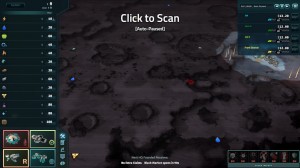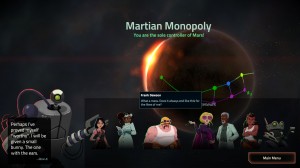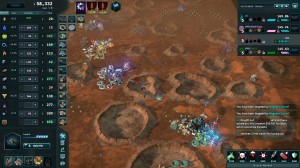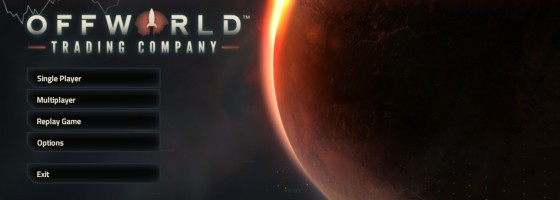Offworld Trading Company is the latest game from Civilization 4 designer Soren Johnson and the first of his new studio Mohawk Games. The game has been in early access for a very long time and has finally been released. While the basic concept remains the same, the months of polish and fine tuning has helped out a lot; making one of the best and most interesting strategy games released in a long time.
Mule 2.0:
Offworld Trading Company is a spiritual successor to the classic economic strategy game Mule. In both Offworld Trading Company (or OTC for the rest of this post) and Mule, you’re waging war with money and commodities instead of with armies. The basic goal in a play of OTC is to buyout the other players on the map; assuring your dominance of the mining rights on Mars.
To do so, you must mine resources and produce commodities under the ever changing market in order to have enough money to protect your company while buying out the shares in the other players. In every play of OTC, you’ll start by scanning the procedurally generated map for resource spots and then picking a HQ or company. The four companies in the game each have different advantages, resource needs and a little avatar.
Each player starts with claims that they can use to buy and control a tile on the map. Generally, you’re going to be claiming tiles that either have resources you need, or plots to build important structures. When you run out of tiles, the standard way to get more would be to upgrade your HQ; requiring different resources and adding additional costs to deal with. The market on the left side of the screen dictates the values of all the resources in the game; with the cost rising and lowering based on random events or if the other players are buying or sells commodities respectively.

The procedurally generated maps and fluctuating market prices insure that each game plays out different
OTC distinguishes itself from other RTS games on the market by the fact that it is not very micro intensive at all. Playing singleplayer, the game will auto pause whenever you need to make an action.
Even with that said, the game moves at a slow enough pace that a player’s APM is not going to dictate who wins in the end, but how smart they play. While the early game is all about getting the resources you need to improve in the works, OTC’s mid and late game throw several wrenches into the mix and really liven the game up.
Crashing the Market:
OTC’s mid and late game provides the player with a lot of direct options to control how the game continues (or ends.) The Black Market gives you special powers and means to impact the other players or to have them mess with you. Because the costs of powers gets successively more expensive, there is strategy in knowing what to buy and when.
Patents are powerful technology upgrades that will go to the first person who researches them at a patent lab. Similar to Civilization and wonders, there can be rushes to see who can get to the patent first. You can also impact the price of goods with a hacker array and earn free money with pleasure domes. Finally, there is the optimization building that lets you improve the gathering or production rate of every resource in the game, provided you have enough chemicals.
But the big ticket building and the one everyone needs is the offworld market. The offworld market lets you sell resources to mining colonies for big bucks, and is the only way to get the money needed to buy out the other players to win and protect yourself in the process.
The beauty of OTC is how the base systems of the game are built around the market and help to keep each play fresh. While the resources that you need will remain the same every time, how you acquire them and their value will change both in different matches and over the course of a play.
In one game, while electronics and chemicals were really expensive and making me some good money, it was Oxygen that was worth the most offworld; forcing me to shift production that way in order to have the money to buy everyone out. In another game, I cornered the market on glass and made a killing to get around the fact that I did not produce electronics or chemicals for advanced buildings.

The campaign mode introduces meta-game elements and offers a different feel compared to just straight skirmish
Adding to the variety are the four different HQ types. Each one gives certain advantages and makes use of resources in a slightly different way, but still different enough to impact how you approach a play with them. The unusual piece of OTC’s gameplay is the fact that you scout the map first and then choose a HQ.
This is very important, because the resources and their distance from one another will impact the best HQ for the job. If there is tons of silicon and thermal vents for electronics and power respectively, the robotics HQ will be the best fit for example.
So far we’ve only talked about the base systems and multiplayer, but there is still the work Mohawk Games put into the singleplayer campaign; giving it a different feel and structure for when you want something grander.
Mining the Red Planet:
The campaign mode pits you against the AI in a series of seven matches, as you try to take over the claims on the planet for your own. Each week, you choose a mission to go after with a reward for winning it; you will not fail the campaign until a few weeks in.
There is a meta-game to this mode with how you spend money and hire engineers. You are limited by what you can build at the start depending on who you choose as your CEO. Buying engineers will either let you take them on contract for a week, or spend more money to unlock them permanently for the campaign.
If you can survive until the final week, you will have one more mission with everything you’ve unlocked to see if you can buy out the remaining companies and win the mode. It’s an interesting idea to limit the player with the meta-game and makes for a nice diversion from the skirmish mode.
Offworld Trading Company positions itself as a different kind of strategy game and it works, but my main problem has to do with how well the game will remain interesting across many plays.
A Hostile Takeover:
From a design point of view, OTC’s mechanics work brilliantly and help set it apart from other strategy games on the market. My one main problem with the game comes from replayability; specifically focusing on whether the game mechanics offer enough choice and variability to keep people playing and coming back.
The thing to keep in mind about OTC is that the randomness comes from the resource locations, their prices and events, and the black market options; the actual path through the game and what you need remains the same every time. I know that I’m going to need electronics for the late-game, meaning that I either need to expend claims to produce them or pay a lot for them.

Reading the situation is the hardest part of learning the game, and where most players will have trouble with figuring out
While some buildings do have alternate means of acquiring resources or producing (the Scientific HQ comes to mind,) there are very few variants in the game.
Every game at the moment will end with offworld markets; there is no way around this, no alternate strategies, you either get them or you lose by default. Because of how the black market is set up, it’s very easy to get tagged team by other players or the AI with no way to get around it.
I do want to point out that while the tutorial is great at teaching you the concepts, like other tutorials, it’s lacking in properly teaching you “the why/when” in relation to your strategies and options.
The point of difficulty is the fact that every map is different; the only way you’re going to know what to do under specific circumstances is to learn by losing. With that said, losing can be very frustrating due to how the structure of the game works. Once you start winning and pulling ahead, you’re most likely going to win the game. On the flip side, start falling behind and there is very little you can do to protect yourself from a buyout.
One element that makes strategy games great is giving the player a variety of choices to help make each match play differently and avoid the trap of only having one way to victory. At the moment, the micro layer of OTC is varied thanks to the changing market and events, but the macro layer of player options is limited and repeatable once you know what you’re doing.
If the game continues to get worked on and more content released, I would love for them to go the route of supplemental content seen in strategy games like XCOM and Civilization; where it’s more about adding options for the player to make the game more varied, and less about just adding time to the individual plays.
A Startup Company:
Offworld Trading Company is an impressive strategy game and one that we don’t see too often these days. It’s close to being amazing and this is one game I would love to see the developers continue to work on it. For more on Offworld Trading Company, you can check out my video series of showing off how to play it.
If you enjoyed this post, please consider donating to the Game-Wisdom Patreon Campaign. Your donations help to keep Game-Wisdom going and allow me to continue to put out great content.


